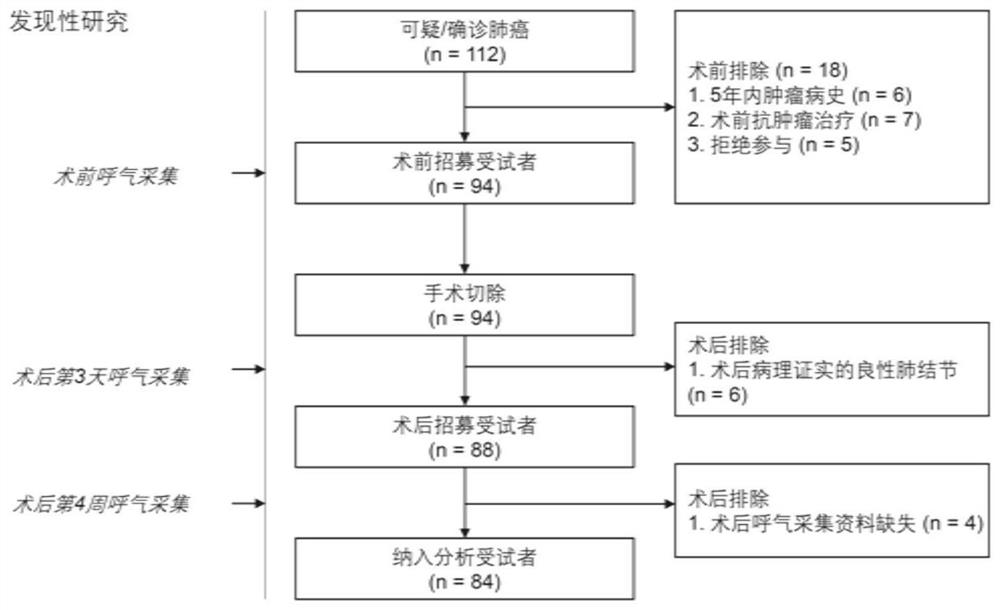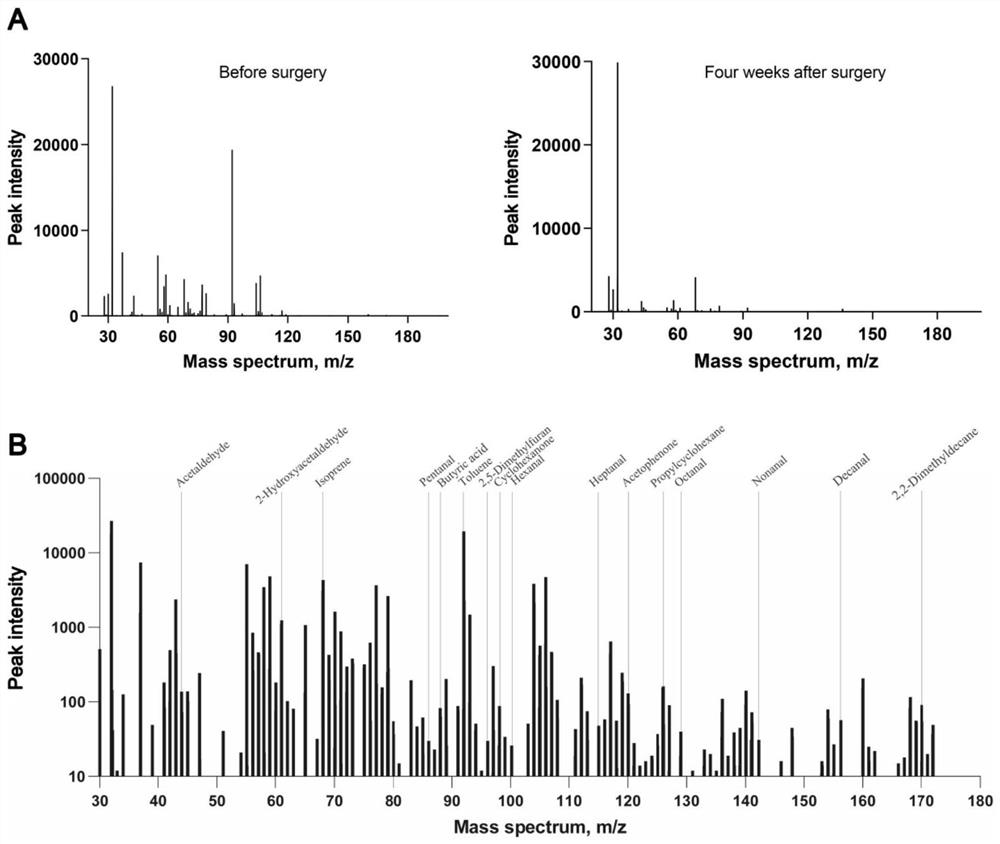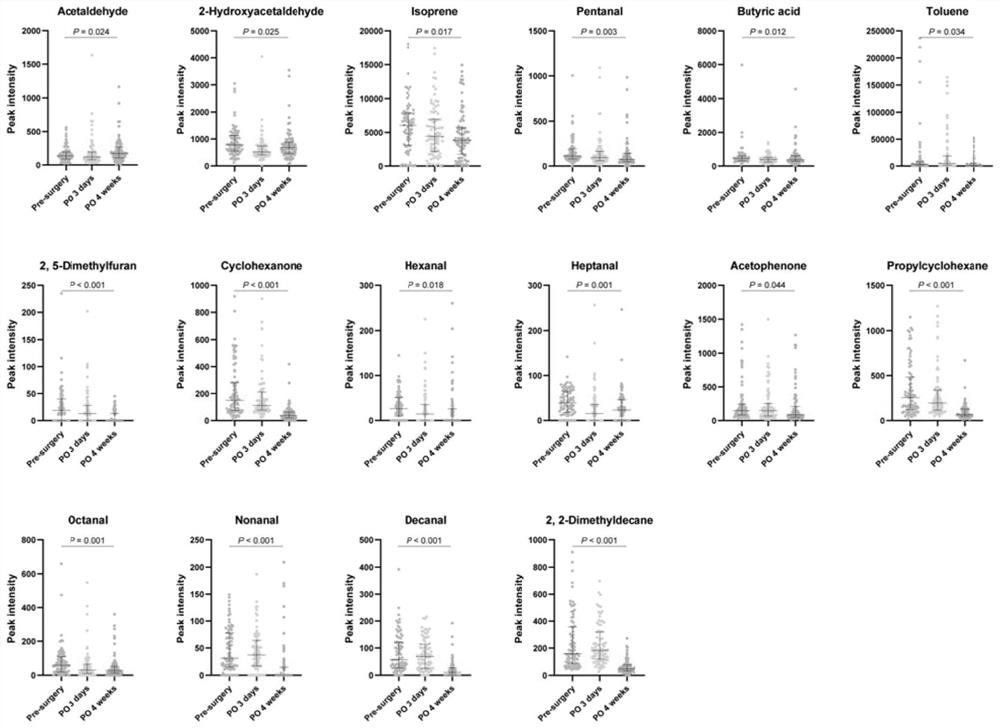HPPI-TOFMS-based early-stage lung cancer diagnosis expiratory gas marker screening and application thereof
A technology for lung cancer and auxiliary diagnosis, which is applied in the field of medical diagnosis and can solve the problems of increasing the complexity of data analysis, cumbersome preprocessing steps, time-consuming detection process, limitations, etc.
- Summary
- Abstract
- Description
- Claims
- Application Information
AI Technical Summary
Problems solved by technology
Method used
Image
Examples
Embodiment 1
[0094] Example 1. Screening of biomarkers (discovery studies)
[0095] The flow chart of discovery research is as follows figure 1 shown.
[0096] 1. Subject screening and subject information
[0097] The discovery study was conducted at Peking University People's Hospital from September to December 2020. Breath samples were collected at three time points, the morning of the day of surgery (preoperative), 3 days postoperatively, and 4 weeks postoperatively. This study was approved by the Ethics Committee of Peking University People's Hospital (2019PHB095-01). All patients were informed about the study protocol and obtained written consent prior to study entry. The study was conducted in accordance with the Standards for Reporting Diagnostic Accuracy (STARD) reporting guidelines (Bossuyt PM, Reitsma JB, Bruns DE, Gatsonis CA, Glasziou PP, Irwig L, et al. STARD 2015: an updated list of essentialitems for reporting diagnostic accuracy studies. BMJ.2015;351:h5527.DOI:10.1136 / ...
Embodiment 2
[0118] Example 2. Confirmation and Evaluation of Biomarkers (Confirmation Study)
[0119] The flow chart of the confirmatory study is as follows Figure 4 shown.
[0120] 1. Subject screening and subject information
[0121] The above-mentioned lung cancer exhalation markers were verified in the First Affiliated Hospital of Zhengzhou University.
[0122] Inclusion criteria for lung cancer patients in the confirmatory study were the same as in the discovery study; breath samples were collected on the day of surgery or biopsy (preoperatively). A healthy person in a confirmatory study was defined as a person who underwent an LDCT examination with no positive result; a breath sample was collected on the day of the examination. All participants were instructed to fast for at least 8 hours and not to consume spicy food, alcohol or coffee the night before breath collection.
[0123] The confirmatory study included 157 lung cancer patients and 368 healthy individuals. Subject cha...
PUM
 Login to View More
Login to View More Abstract
Description
Claims
Application Information
 Login to View More
Login to View More - R&D
- Intellectual Property
- Life Sciences
- Materials
- Tech Scout
- Unparalleled Data Quality
- Higher Quality Content
- 60% Fewer Hallucinations
Browse by: Latest US Patents, China's latest patents, Technical Efficacy Thesaurus, Application Domain, Technology Topic, Popular Technical Reports.
© 2025 PatSnap. All rights reserved.Legal|Privacy policy|Modern Slavery Act Transparency Statement|Sitemap|About US| Contact US: help@patsnap.com



